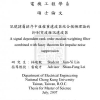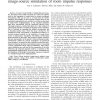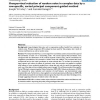19 search results - page 1 / 4 » Fuzzy random impulse noise reduction method |
FSS
2007
13 years 4 months ago
2007
ICASSP
2011
IEEE
12 years 8 months ago
2011
IEEE
A new noise reduction method based on spatio-temporal frequency analysis is proposed that can be applied to head-related impulse response (HRIR), which is an impulse response betw...
ICIP
2010
IEEE
13 years 2 months ago
2010
IEEE
In this paper, we develop an adjustable Fuzzy Extractor using the Physical Unclonable Functions (PUF) obtained by a common laser engraving method to sign physical objects. In part...
TASLP
2010
12 years 11 months ago
2010
Abstract-- In many research fields of engineering and acoustics, the image-source model represents one of the most popular tools for the simulation of sound fields in virtual rever...
BMCBI
2008
13 years 4 months ago
2008
Background: Large biological data sets, such as expression profiles, benefit from reduction of random noise. Principal component (PC) analysis has been used for this purpose, but ...



